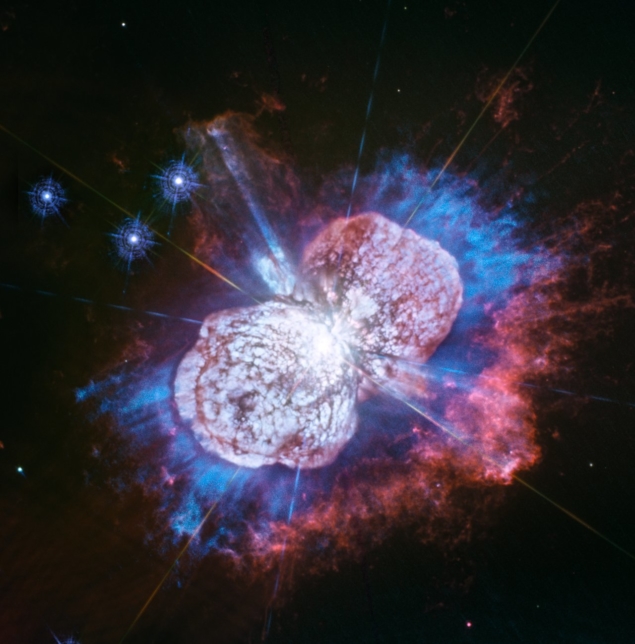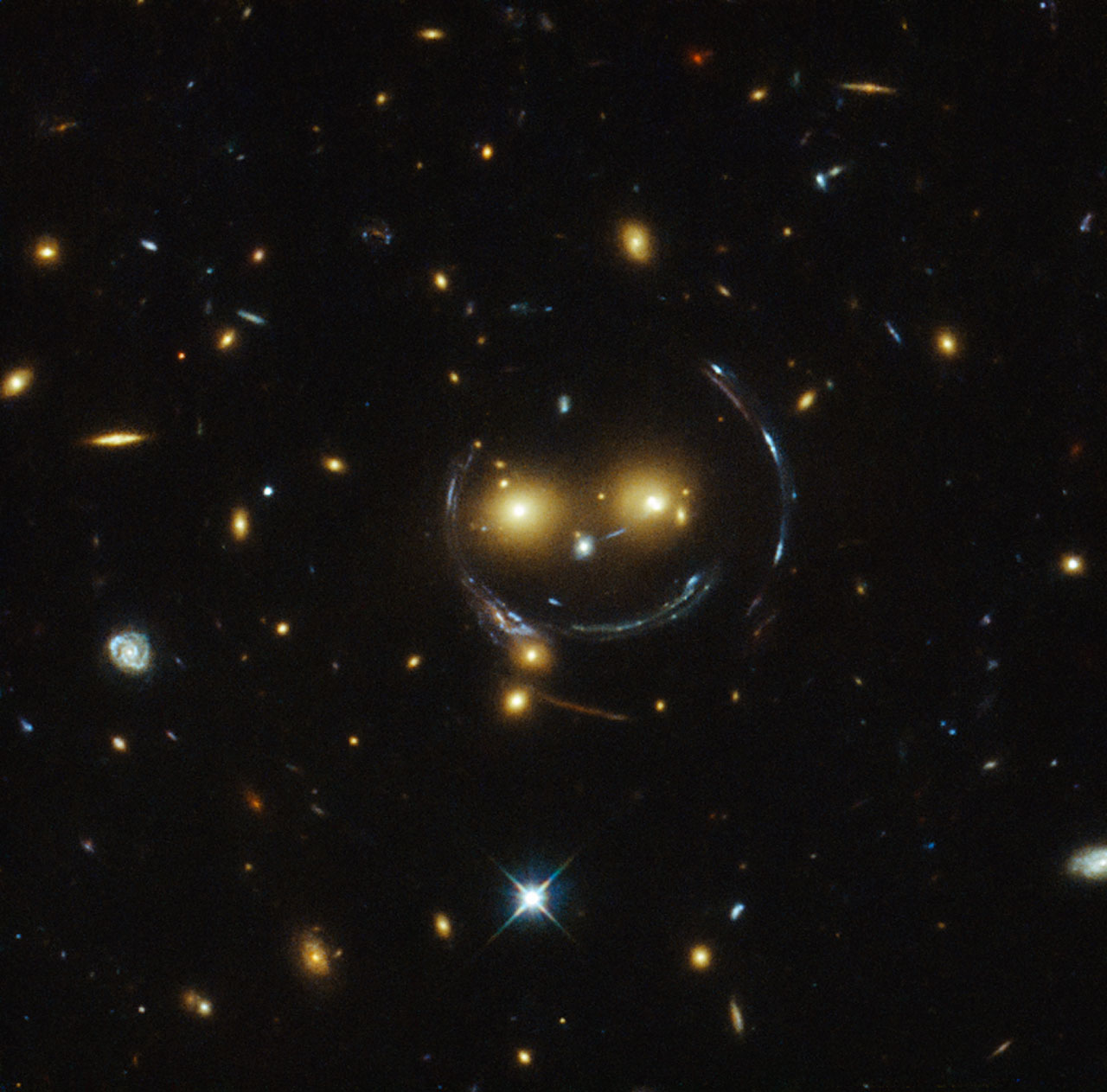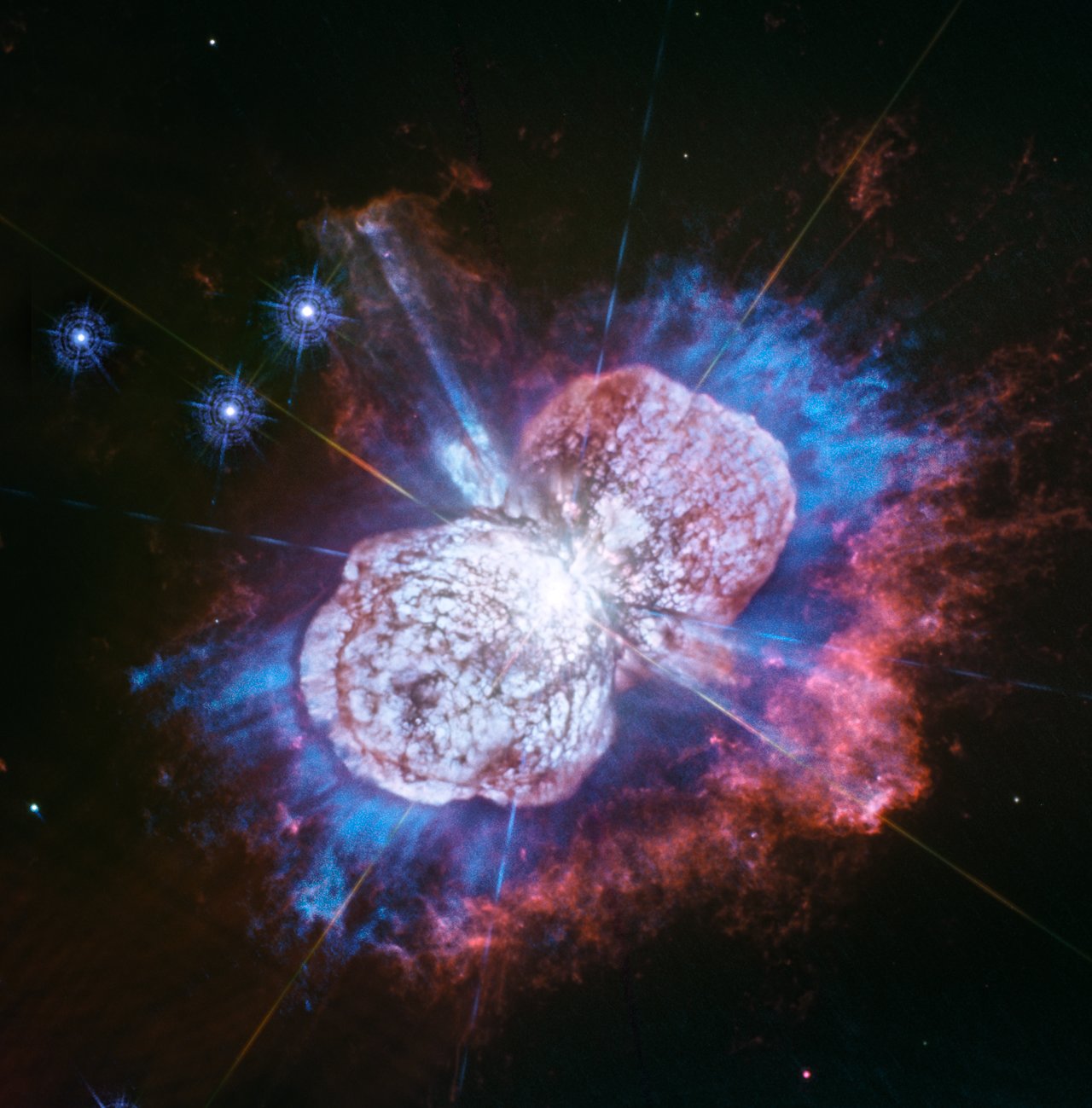The Hubble Space Telescope was launched on 24 April 1990. To celebrate its 30th anniversary in space, Physics World is publishing a series of blog posts exploring Hubble’s 10 best images, as chosen by the science journalist and editor Keith Cooper

Hidden beneath the expanding lobes of gas and dust in this multi-wavelength view is one of the most massive and volatile stars in the Milky Way. Eta Carinae was just another nondescript star until 1843, when it underwent a dramatic outburst and briefly became the second-brightest star in the night sky. It’s unclear exactly what prompted this explosive episode, but we do know that Eta Carinae – actually a double star system concealed at the epicentre of the two lobes – shed an enormous amount of mass from its outer layers in the process.

Hubble’s best shots: a cheeky gravitational grin
Hubble’s false-colour image combines visible light observations by its Wide Field Camera 3 with ultraviolet-light data from the its Ultraviolet Imaging Spectrograph. It shows the presence of gas – magnesium in blue, and shocked nitrogen gas presented here in red – that could have been ejected by the star shortly before its outburst, and which could therefore provide clues as to what caused the tumultuous eruption.

